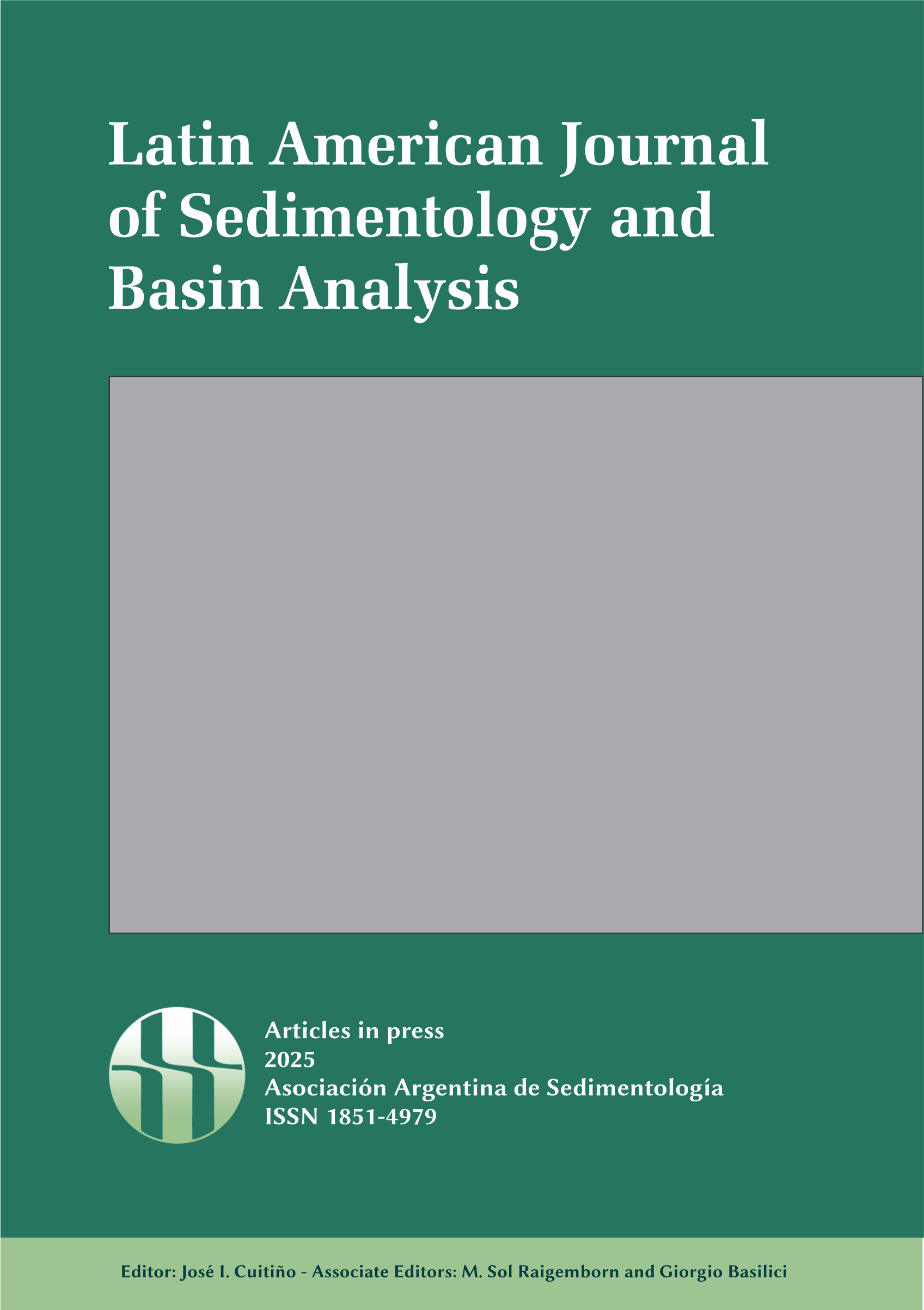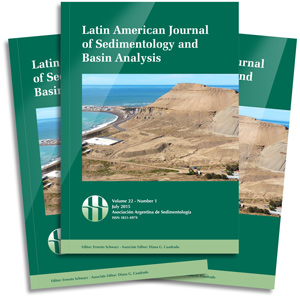MiSMoS (MicroScale Morphology System): an inexpensive new method to survey 3D surface micromorphology
Keywords:
Portable survey system, MiSMoS, micromorphology mapping, beachAbstract
Microscale morphology in coastal environments is complex to study due to both the large spatial and temporal variability. No direct instrumentation is available to map the micromorphology in detail. The aim of this article is to describe the application of the newly developed MiSMoS (MicroScale Morphology System) methodology for mapping surface and small-scale morphologic features such as ripples, rills, and small courses, as well as to demonstrate its advantages and limitations. A set of measurements on a perched beach that offers varied microforms was carried out as a case study example. The MiSMoS consists of a table of 1.6 m x 1.6 m square aluminum structure with six L-shaped rails on top to mobilize a sensor-carrying structure, which is supported on 4 legs (0.60 m high). The sensor-carrying structure is built with two cameras and a Laser Distance Meter (LDM), with cameras at a fixed angle of 20°. In the operating procedure for high-resolution mapping, the sensor-carrying structure is manually moved sequentially capturing images that cover a surface of 0.60 x 0.60 m, with 75% overlap. High-resolution 3D models were generated from the images using Structure-from-Motion, Multi-View-Stereo (SfM-MVS) technique. MiSMoS has numerous advantages over commercial instrumentation: 1) it can map topography at a high resolution, 2) it is easy to build and deploy, 3) it is inexpensive, and 4) in one operation, a high-resolution map of an area of 2.25 m2 can be obtained in about 15-20 min, whereas other systems usually only provide profiles.
References
Agüera Vega, F., Agüera Puntas, M., Martínez Carricondo, P., Mancini, F. and Carvajal, F. (2020). Effects of point cloud density, interpolation method, and grid size on derived Digital Terrain Model accuracy at micro topography level. International Journal of Remote Sensing, 41(21), 8281–8299. DOI: 10.1080/01431161.2020.1771788
Andes, T. (2018). Caracterización físico-química de la descarga de agua subterránea en la playa de Pehuén Co: influencia ambiental y geomorfológica [Unpublished Licentiate Thesis]. Universidad Nacional del Sur, 32 pp.
BOSCH, (2017). Instrucciones de Servicio. https://www.bosch-professional.com/es/es/archive/dle-50-9947-p/
Bupo, M. and Weber, J. F. (2017). Methodology for measuring micro topographies in laboratory channels with a motion sensor. Ribagua, 4(2), 99–109. https://doi.org/10.1080/23863781.2017.1381454
Bustos, M.L., Zilio, M., Ferrelli, F., Piccolo, M.C., Mavo Manstretta, G.M. and Perillo, G.M.E. (2021). Tourism in the COVID-19 context in mesotidal beaches: Carrying capacity for the 2020/2021 summer season in Pehuén Co, Argentina. Ocean and Coastal Management 206, 105584. DOI 10.1016/j.ocecoaman.2021.105584
Dagnino, J. (2014). Regresión lineal. Revista chilena de anestesia, 43(2), 150–153. https://doi.org/10.25237/revchilanestv43n02.15
Ehrhardt, A., Deumlich, D. and Gerke, H.H. (2022). Soil surface micro-topography by structure-from-motion photogrammetry for monitoring density and erosion dynamics. Frontiers in Environmental Science, 9, 737702. doi: 10.3389/fenvs.2021.737702
Foulds, S.A. and Warburton, J. (2007). Wind erosion of blanket peat during a short period of surface desiccation (North Pennines, Northern England). Earth Surface Processes and Landforms, 32, 481–488. https://doi.org/10.1002/esp.1422
Genchi, S., Vitale, A., Perillo, G. and Delrieux, C. (2015). Structure-from-Motion Approach for Characterization of Bioerosion Patterns Using UAV Imagery. Sensors, 15(2), 3593–3609. doi:10.3390/s150203593
Gómez-Gutiérrez, A., Schnabel, S., Berenguer Sempere, F., Lavado Contador, F., Rubio and Delgado, J. (2014). Using 3D photo-reconstruction methods to estimate gully headcut erosion. Catena 120, 91–101. doi:10.1016/j.catena.2014.04.004
Hasmanda, M., and Riha, K. (2012). The modelling of stereoscopic 3D scene acquisition. Radioengineering, 21(1), 134–142. ISSN 1805-9600
James, M.R., and Robson, S. (2014). Mitigating systematic error in topographic models derived from UAV and ground-based image networks. Earth Surf. Process. Landforms, 39, 1413–1420. https://doi.org/10.1002/esp.3609
Lane, S.N., Richards, K.S., and Chandler, J.H. (1994). Developments in monitoring and modelling small-scale river bed topography. Earth Surface Processes and Landforms, 19(4), 349–368. https://doi.org/10.1002/esp.3290190406
Li, Y., Lu, X., Washington Allen, R. A., and Li, Y. (2022). Microtopographic controls on erosion and deposition of a rilled hillslope in eastern Tennessee, USA. Remote Sensing, 14(6), 1315. https://doi.org/10.3390/rs14061315
Matias, B., Oliveira, H., Almeida, J., Dias, A., Ferreira, H., Martins, A., and Silva, E. (2015). High-accuracy low-cost RTK-GPS for an unmanned surface vehicle. Oceans, Genova, Italy, 1–4, doi: 10.1109/OCEANS-Genova.2015.7271673.
Miles, J., Thorpe, A., Russell, P., and Masselink, G. (2014). Observations of bedforms on a dissipative macrotidal beach. Ocean Dynamics 64, 225–239. https://doi.org/10.1007/s10236-013-0677-2
Nakata, Y., Iwasaki, K., Shimoda, S., and Torita, H. (2023). Understanding microtopography changes in agricultural landscapes through precision assessments of digital surface models by the UAV-RTK-PPK method without ground control points. Smart Agricultural Technology, 100–269. https://doi.org/10.1016/j.atech.2023.100269
Nesbit, P.R., and Hugenholtz, C.H. (2019). Enhancing UAV-SfM 3D Model Accuracy in High-Relief Landscapes by Incorporating Oblique Images. Remote Sensing, 11(3), 1–24. doi:10.3390/rs11030239
Nouwakpo, S. K., James, M. R., Weltz, M. A., Huang, C. H., Chagas, I., and Lima, L. (2014). Evaluation of structure from motion for soil microtopography measurement. The photogrammetric record, 29(147), 297–316. DOI:10.1111/phor.12072
Nouwakpo, S. K., Weltz, M.A., and McGwire, K. (2016). Assessing the performance of structure-from-motion photogrammetry and terrestrial LiDAR for reconstructing soil surface microtopography of naturally vegetated plots. Earth Surfaces Processes and Landforms 41, 308–322. DOI: 10.1002/esp.3787
Nouwakpo, S.K., Toledo, D., Sanderson, M., and Weltz, M. (2019). Understanding the effects of grazing and prescribed fire on hydrology of Kentucky bluegrass–dominated rangelands in the northern Great Plains. Journal of Soil and Water Conservation, 74, 360-371. 10.2489/jswc.74.4.360.
Otvos, E.G. (1999). Rain-induced beach processes; landforms of ground water sapping and surface runoff. Journal of Coastal Research, 15(4), 1040–1054. https://www.jstor.org/stable/4299023
Passalacqua, P., Belmont, P., Staley, D. M., Simley, J. D., Arrowsmith, J. R., Bode, C. A., Crosby, C, DeLong, S. B., Glenn, N. F., Kelly S. A., and Lague, D. (2015). Analyzing high resolution topography for advancing the understanding of mass and energy transfer through landscapes: A review. Earth-Science Reviews, 148, 174–193. https://doi.org/10.1016/j.earscirev.2015.05.012
Perillo, G.M.E., and Piccolo, M.C (2011). Global Variability in Estuaries and Coastal Settings. In: E. Wolanski and D.S. McLusky (eds.), Treatise on Estuarine and Coastal Science, Vol 1, pp. 7–36. Waltham: Academic Press. 10.1016/B978-0-12-374711-2.00102-9.
Perillo, G.M.E., Nuciari, L., Alquinga Salazar, Y.C., Genchi, S.A., Perillo, V.L., and Piccolo, M.C. (2022). MiSMoS: a microscale morphology system. In Proceedings of the II Particles in the Americas Conference: 24.
Remondino, F., and Fraser, C. (2006). Digital Camera Calibration Methods: Considerations and Comparisons. International Archives of Photogrammetry. Remote Sensing and Spatial Information Sciences, 36(5), 266–27. https://doi.org/10.3929/ethz-b-000158067
Sherman, D. J., Short, A. D., and Takeda, I. (1993). Sediment mixing-depth and bedform migration in rip channels. Journal of coastal research 15, 39–48. ISSN 0749-0208. DOI: 10.2307/25735722
Shukla, T., Tang, W., Trettin, C. C., Chen, G., Chen, S., and Allan, C. (2023). Quantification of microtopography in natural ecosystems using close-range remote sensing. Remote Sensing, 15(9), 2387. DOI:10.3390/rs15092387
Turner, I. L., Russell, P. E., and; Butt, T. (2008). Measurement of wave-by-wave bed-levels in the swash zone. Coastal Engineering, 55(12), 1237–1242. doi:10.1016/j.coastaleng.2008.09.009
Downloads
Published
How to Cite
Issue
Section
License
Copyright (c) 2025 Yajaira Cristina Alquinga Salazar, Sibila A. Genchi, Lucas Nuciari, Vanesa L. Perillo, M. Cintia Piccolo, Gerardo M. E. Perillo

This work is licensed under a Creative Commons Attribution-NonCommercial 4.0 International License.




